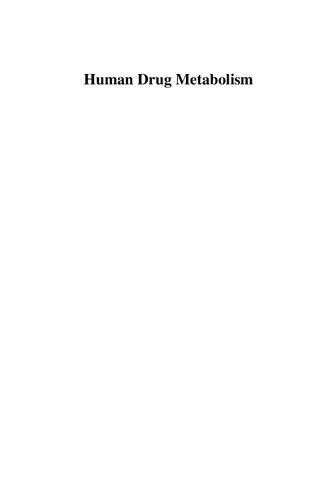

Most ebook files are in PDF format, so you can easily read them using various software such as Foxit Reader or directly on the Google Chrome browser.
Some ebook files are released by publishers in other formats such as .awz, .mobi, .epub, .fb2, etc. You may need to install specific software to read these formats on mobile/PC, such as Calibre.
Please read the tutorial at this link: https://ebookbell.com/faq
We offer FREE conversion to the popular formats you request; however, this may take some time. Therefore, right after payment, please email us, and we will try to provide the service as quickly as possible.
For some exceptional file formats or broken links (if any), please refrain from opening any disputes. Instead, email us first, and we will try to assist within a maximum of 6 hours.
EbookBell Team

4.7
86 reviewsProvides a timely update to a key textbook on human drug metabolism
The third edition of this comprehensive book covers basic concepts of teaching drug metabolism, starting from extreme clinical consequences to systems and mechanisms and toxicity. It provides an invaluable introduction to the core areas of pharmacology and examines recent progress and advances in this fast moving field and its clinical impact.
Human Drug Metabolism, 3rd Edition begins by covering basic concepts such as clearance and bioavailability, and looks at the evolution of biotransformation, and how drugs fit into this carefully managed biological environment. More information on how cytochrome P450s function and how they are modulated at the sub-cellular level is offered in this new edition. The book also introduces helpful concepts for those struggling with the relationship of pharmacology to physiology, as well as the inhibition of biotransformational activity. Recent advances in knowledge of a number of other metabolizing systems are covered, including glucuronidation and sulphation, along with the main drug transporters. Also, themes from the last edition are developed in an attempt to chart the progress of personalized medicine from concepts towards practical inclusion in routine therapeutics. The last chapter focuses on our understanding of how and why drugs injure us, both in predictable and unpredictable ways. Appendix A highlights some practical approaches employed in both drug metabolism research and drug discovery, whilst Appendix B outlines the metabolism of some drugs of abuse. Appendix C advises on formal examination preparation and Appendix D lists some substrates, inducers and inhibitors of the major human cytochrome P450s.
Human Drug Metabolism, 3rd Edition is an excellent book for advanced undergraduate and graduate students in molecular biology, biochemistry, pharmacology, pharmacy, and toxicology. It will also appeal to professionals interested in an introduction to this field, or who want to learn more about these bench-to-bedside topics to apply it to their practice.